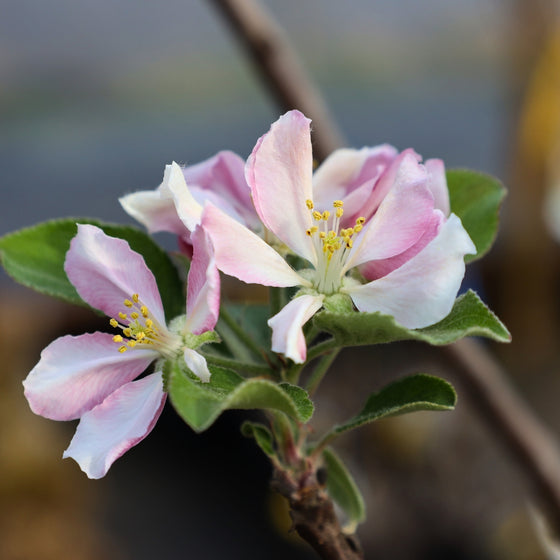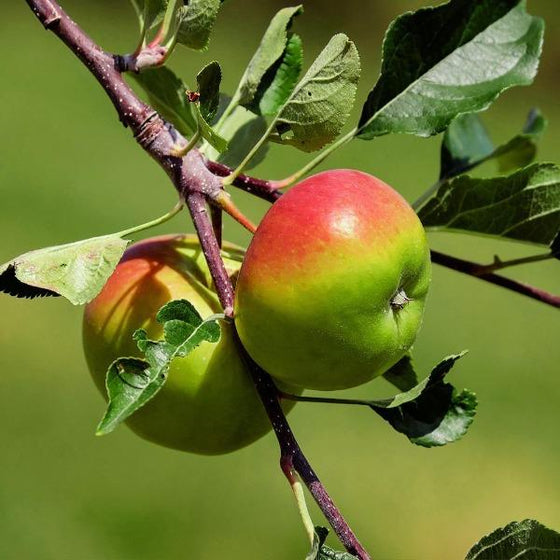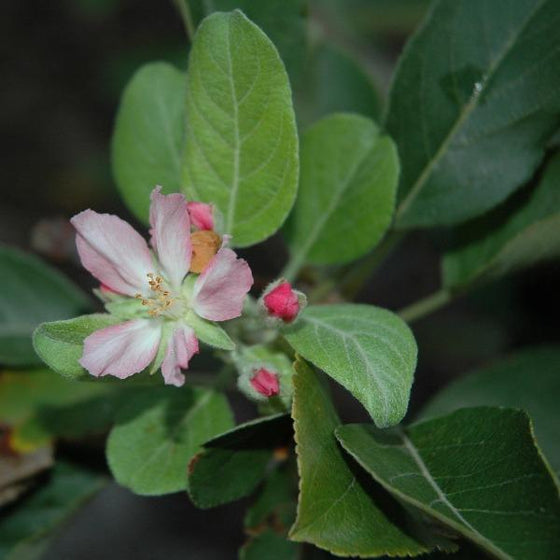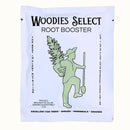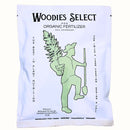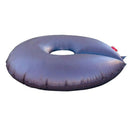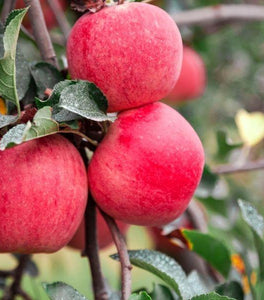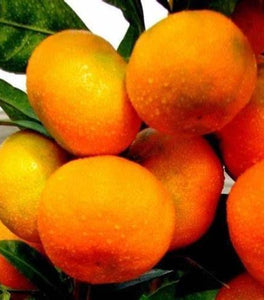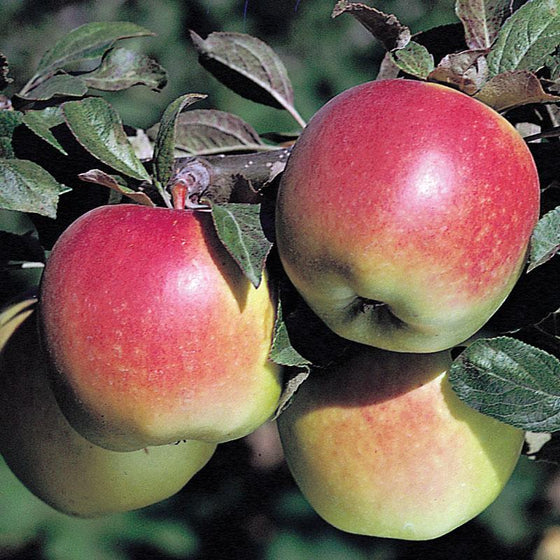
Images Depict Mature Plants
Anna Apple Trees for Sale Online
The Anna Apple Tree (Malus domestica 'Anna') is a popular, early-bearing apple variety prized for its crisp texture, sweet flavor, and adaptability to warm climates. Originally developed in Israel, this semi-dwarf apple tree is ideal for southern growers and performs exceptionally well in USDA Zones 5–9, especially in areas with mild winters and hot summers. Anna Apples are bright red with a slight green blush and have a flavor and texture similar to 'Red Delicious'—making them perfect for fresh eating, baking, and juicing. This low-chill variety requires just 200–300 chill hours, making it a standout performer in regions where traditional apple trees struggle.
The Anna Apple Tree is a vigorous grower, reaching a mature height of 15 to 20 feet if left unpruned, though it can be easily maintained as a smaller tree through regular pruning. It begins bearing fruit at a young age, often producing its first apples within one to two years of planting. For best fruit production, it is recommended to plant Anna with a pollinator partner such as the Dorsett Golden Apple Tree or Ein Shemer Apple Tree, both of which bloom around the same time. With cross-pollination, you'll enjoy a more abundant harvest of juicy, flavorful apples from late spring to early summer.
Whether you're starting a home orchard or adding a productive centerpiece to your edible landscape, the Anna Apple Tree offers beauty, resilience, and a reliable harvest. Its showy spring blossoms attract pollinators, while the tree’s manageable size makes it suitable for backyard gardens and even large containers. Easy to grow and early to fruit, Anna Apples bring the satisfaction of homegrown fruit to climates where apples are traditionally difficult to grow. Choose the Anna Apple Tree for a delicious, heat-tolerant variety that thrives in your warm-weather orchard.

| Hardiness Zone: | 6-9 |
|---|---|
| Mature Height: | 20 to 25 Feet |
| Mature width: | 15 to 20 Feet |
| Classification: | Broad leaved deciduous tree, spring flowering |
| Sunlight: | Full sun |
| Habit: | Spreading, umbrella shaped canopy |
| Foliage: | Dark green |
| Fruit Color: | Bright yellow with red blush |
| Pruning Season: | Late winter |
| Soil Condition: | Any well drained soil |
| Water Requirement: | Water well until established |
| Uses: | One of the best apples for eating fresh or storing |
How to Care for Anna Apple Tree
Before you buy an Anna Apple Tree, make sure to read about the recommended care instructions to keep this plant healthy and thriving.
How do I plant an Anna Apple Tree?
We suggest when planting your newly purchased dwarf apple tree that you dig a hole twice as wide as the root system but not deeper. Depending on the quality of your existing soil you may need to add a locally sourced compost or topsoil to the back-fill soil. We do not recommend using straight topsoil or compost as a back-fill soil because more times than not these products will retain entirely too much moisture and will cause the root system to rot. Adding compost or topsoil will help the young feeder roots of Anna Apple Trees to spread through the loose, nutrient-rich soil, much easier than if you used solely the existing soil which more times than not will be hard and compacted. The most common cause of plant death after transplanting is planting the new plant too deep. That is why we do not recommend planting in a hole any deeper than the soil line of the plant in the pot. A good rule is that you should still be able to see the soil the plant was grown in after back-filling the hole.
How often do I water my Anna Apple Trees?
After backfilling and lightly compacting the 50/50 mix of existing soil and compost give the Anna Apple variety a good deep watering. This is not to be rushed. Most of the water you put on the plant at first will run away from the plant until the soil is soaked. A general rule of thumb is to count to 5 for every one gallon of pot size. For example, a one-gallon pot would be watered until you count to 5 a three-gallon pot would be 15, and so on. Check the plant daily for the first week or so and then every other day thereafter. Water using the counting method for the first few weeks. Gator Bags are a good investment that will help minimize the chore that watering can be.
How much Fertilizer do Anna Apple Trees require?
Trees such as Anna Apple Trees grow best if they are fertilized lightly in the spring once frost has passed with a well-balanced, extended-release, fertilizer such as Espoma Tree-tone. Fertilize Anna Apple Trees again 6 to 8 weeks later to encourage a heavier fruit set or faster growth of young trees. We recommend Bio-Tone fertilizer when planting. Proper fertilization of your Anna Apple Trees will lead to healthier and more disease-resistant plants, as well as provide you with many more enjoyable fruits. Always, read the label on your fertilizer bag, and follow the instructions.

What type of mulch does an Anna Apple Tree require?
We highly recommend that you mulch your Anna Apple Tree with either a ground hardwood mulch or a ground cypress mulch depending on your local availability. Any type of mulch will do but cypress or hardwood mulch will be of a higher quality and provide better nutrition overall as they breakdown. Mulching helps to keep weeds away which will compete with your new investment for water and nutrients. A 2 to 3-inch layer of mulch is sufficient but remember to take care not to cover any part of the stem of the plant with mulch. It's better to leave a one-inch gap of space between the mulch and the stem or trunk of the plant.

